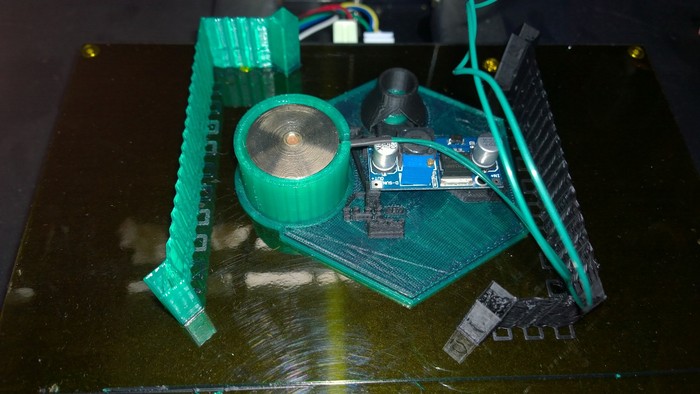Highly Conductive 3D Printer Filament Company Seeks Funding

Latest News
November 12, 2014
A former Microsoft employee has launched a Kickstarter campaign to support the development of an electronically conductive 3D-printing filament. Functionalize, founded by former Microsoft fellow Michael Toutonghi, hopes to raise $100,000. The Kickstarter campaign lasts until Dec. 10, 2014.
 A 3D-printed circuit made using Functionalize’s F-Electric conductive filament. Image: Functionalize
A 3D-printed circuit made using Functionalize’s F-Electric conductive filament. Image: FunctionalizeThe conductive filament could allow users to print circuits, sensors, and other items inside other 3D-printed products. The company claims the F-Electric filament is 1,000 times more conductive than existing materials. The company has printed a key chain LED flashlight to demonstrate how the material works.
According to a statement on the Kickstarter site:
Imagine a world where you can 3D print your cell phone, Internet of Things sensors, drones, or latest in wearable fashion as fully functional devices, complete with circuits and electrical components. That’s where we’re going, and our F-Electric 3D filament is a major step forward in making this a reality. With our breakthrough nanomaterial production process and your creative mind, the sky is the limit in functionalizing the next wave of consumer electronic designs, prototypes and products.
Toutonghi worked at Microsoft off and on until 2011, and was part of the team that developed the Windows 95 kernel. He also founded Vizrea/WebFives, which was later acquired by Microsoft. He also served as CTO at Parallels, which specializes in cloud-based services.
He got the idea for the conductive 3D printing filament while building an electromagnetic rocket for his son’s school science project, which included some 3D-printed parts.
“Once we got to the soldering, we slowed to a crawl, so I assumed we could buy some printer or filament to let us 3D print the electronics as well,” Toutonghi said. “After searching for some time, I simply found nothing on the market that would let you print circuits and plastic 3D printed components.”
The fund raising effort will help the company scale production processes. Supporters at various levels can receive a supply of the filament or a discount on purchases, along with items printed using the material.
Source: Functionalize
Subscribe to our FREE magazine, FREE email newsletters or both!
Latest News
About the Author
Brian Albright is the editorial director of Digital Engineering. Contact him at [email protected].
Follow DE





